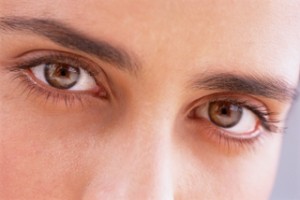Eye Care America recently sent The Caregiver’s Voice an eMail informing us that September is Save Your Sight Month. With only a few more days remaining in September, we wanted to rush this information to our busy caregivers who may have heard of some of the eye-care myths below. Also, if the expense of an eye exam has prevented you or your loved one from getting a check up, these folks might be able to help with a no-cost option. (Ed.)
 We’re constantly reminded to stay healthy by eating right and exercising, but what about your eye health? Eye Care America, a national non-profit organization that provides eye exams and eye health information to medically underserved communities, is exposing September is Save Your Sight Month. in honor of September’s Save Your Sight Month.
We’re constantly reminded to stay healthy by eating right and exercising, but what about your eye health? Eye Care America, a national non-profit organization that provides eye exams and eye health information to medically underserved communities, is exposing September is Save Your Sight Month. in honor of September’s Save Your Sight Month.
Perhaps you have heard some of these common eye-care myths?
1. Reading, sewing, or doing other close work in dim light can damage your eyes.
Fact: Reading in dim light can cause eye fatigue, but it will not damage your eyes. Good lighting will make reading easier and will prevent eye fatigue; especially for older people whose lenses no longer change shape as easily as they did when they were younger.
2. Carrots are the key to good vision.
Fact: Yes, carrots are rich in vitamin A and beta-carotene, which are essential for maintaining good sight. But carrots are not the only eye-healthy food.If you’re not a fan of carrots, don’t worry; there are plenty of other foods to choose from. For more beta-carotene rich choices, look for deep orange or yellow fruits and vegetables such as cantaloupe, mangoes, apricots, peaches, and sweet potatoes.
3. Using computers can damage your eyes.
Fact: Looking at your computer monitors will not harm your eyes. Often, when using a computer for long periods of time, just as when reading or doing other close work, you blink less often than normal. This reduced rate of blinking makes your eyes dry, which may lead to the feeling of eye strain or fatigue.
4. Older people who gain ‘second sight’ may be developing cataracts.
Fact: Older individuals who wear reading eyeglasses sometimes find themselves able to read without their eyeglasses and think that their eyesight is improving. The truth is they are becoming more nearsighted, which can be a sign of early cataract development.
5. You only need an eye exam if you notice that your vision is deteriorating.
Fact: There are a variety of vision conditions and diseases that lack clear warning signs. Oftentimes, only a comprehensive dilated eye exam can confirm that your eyes are healthy and disease-free. In many instances damage caused by eye disease cannot be reversed, which is why it is important to get regular eye exams.
Would you like to see if you or your loved ones qualify for sight-saving eye exams and care at no out-of-pocket cost? EyeCare America encourages you to visit the online referral center at: EyeCare America.
Edited by Brenda Avadian, MA
The Caregiver’s Voice
Last month I was interviewed for this Wall Street Journal article. Although, Melinda Beck interviewed me at some length, the published article was shortened (my part and others were not included–sigh), the article is still informative. Please see: Becoming a Squinter Nation Glasses Can Correct Near and Far, but What About Those Screens in Between?










Thanks for sharing this info, eye health is so important not only during Save Your Sight Month but all year round.
We appreciate the support and best of luck with everything!
Hi Brenda
Thank you so much for posting the information on EyeCare America. I have many friends over the age of 65 who are struggling in this current economy so I will be passing this valuable information along to them.
Keep up the good work …… Celia